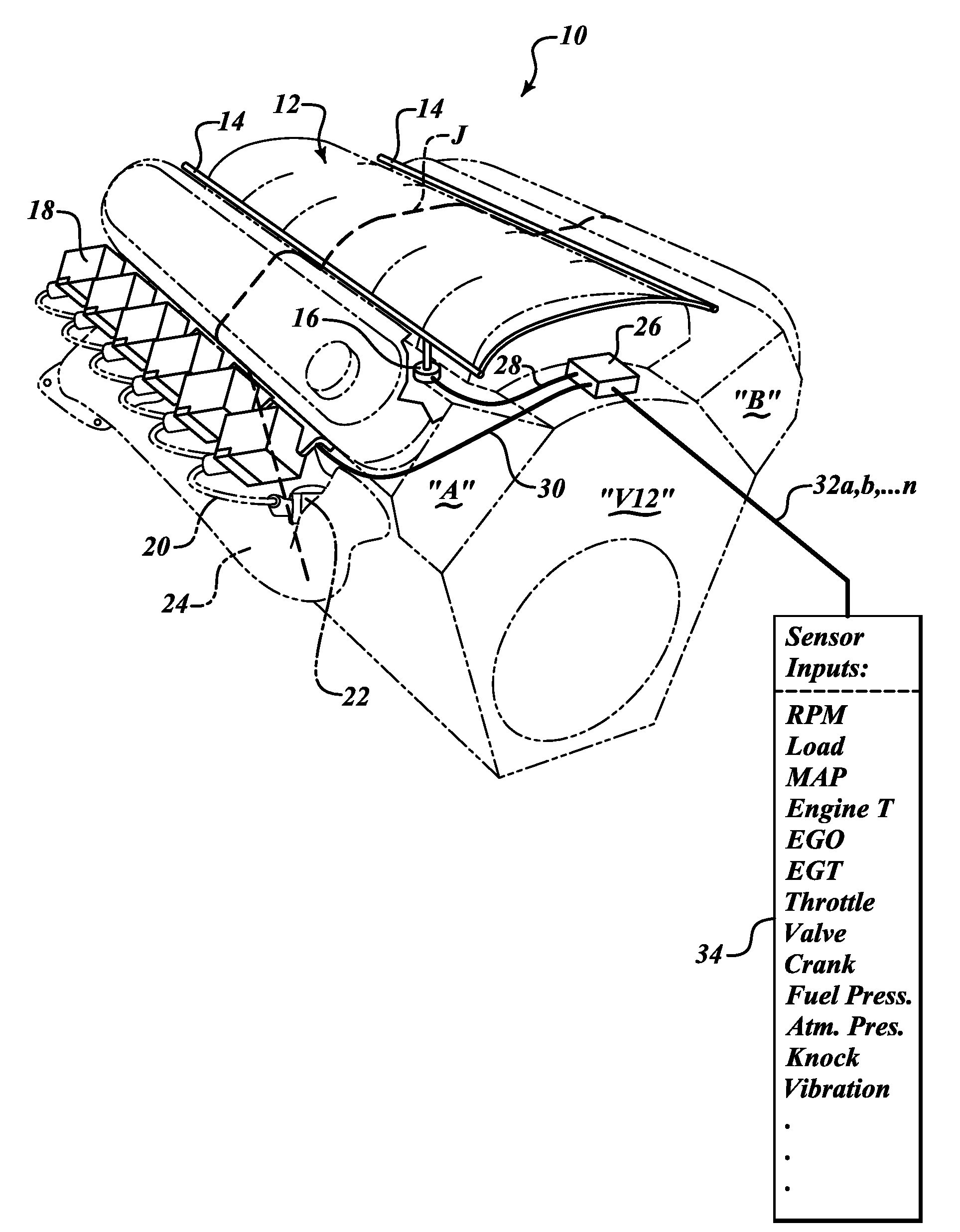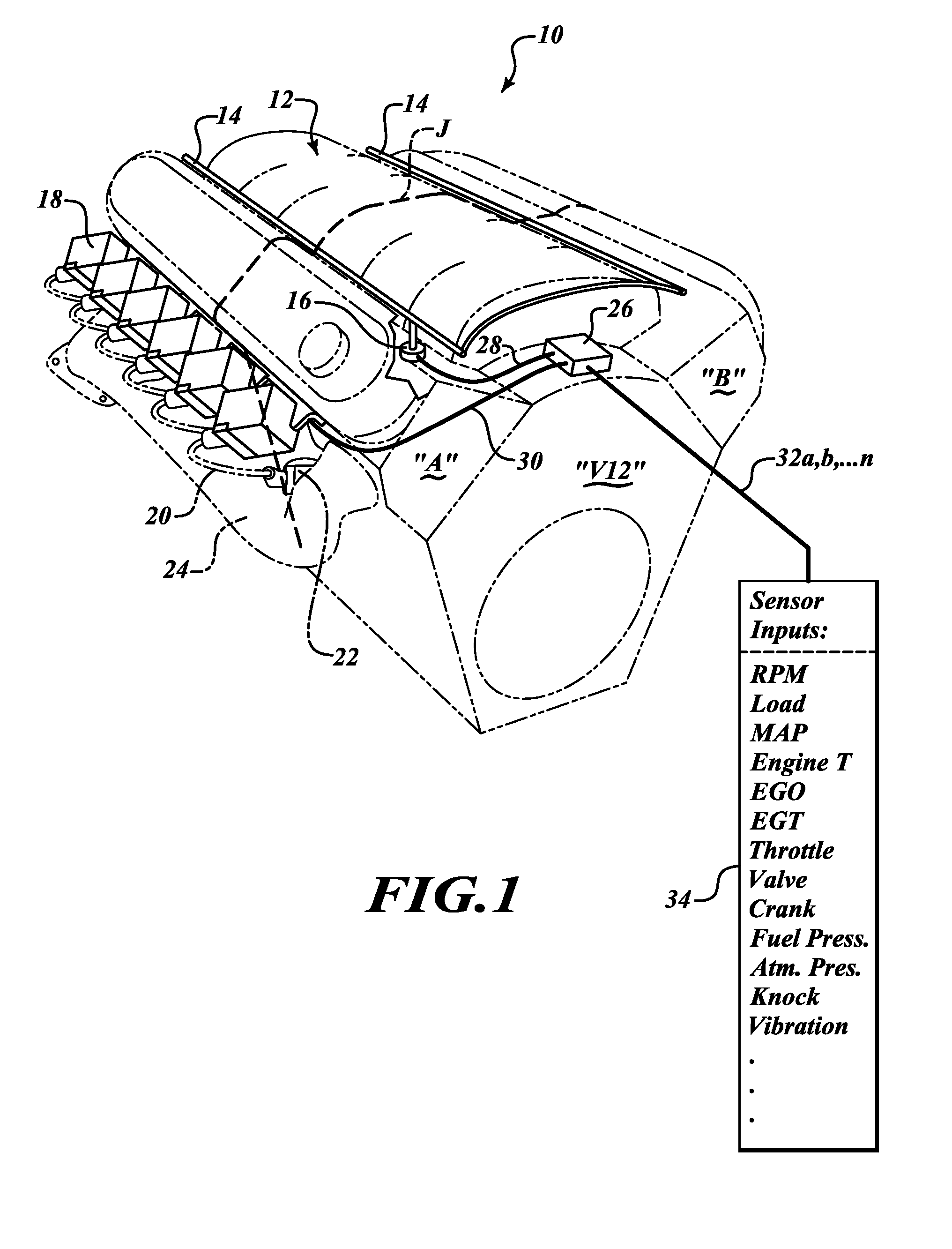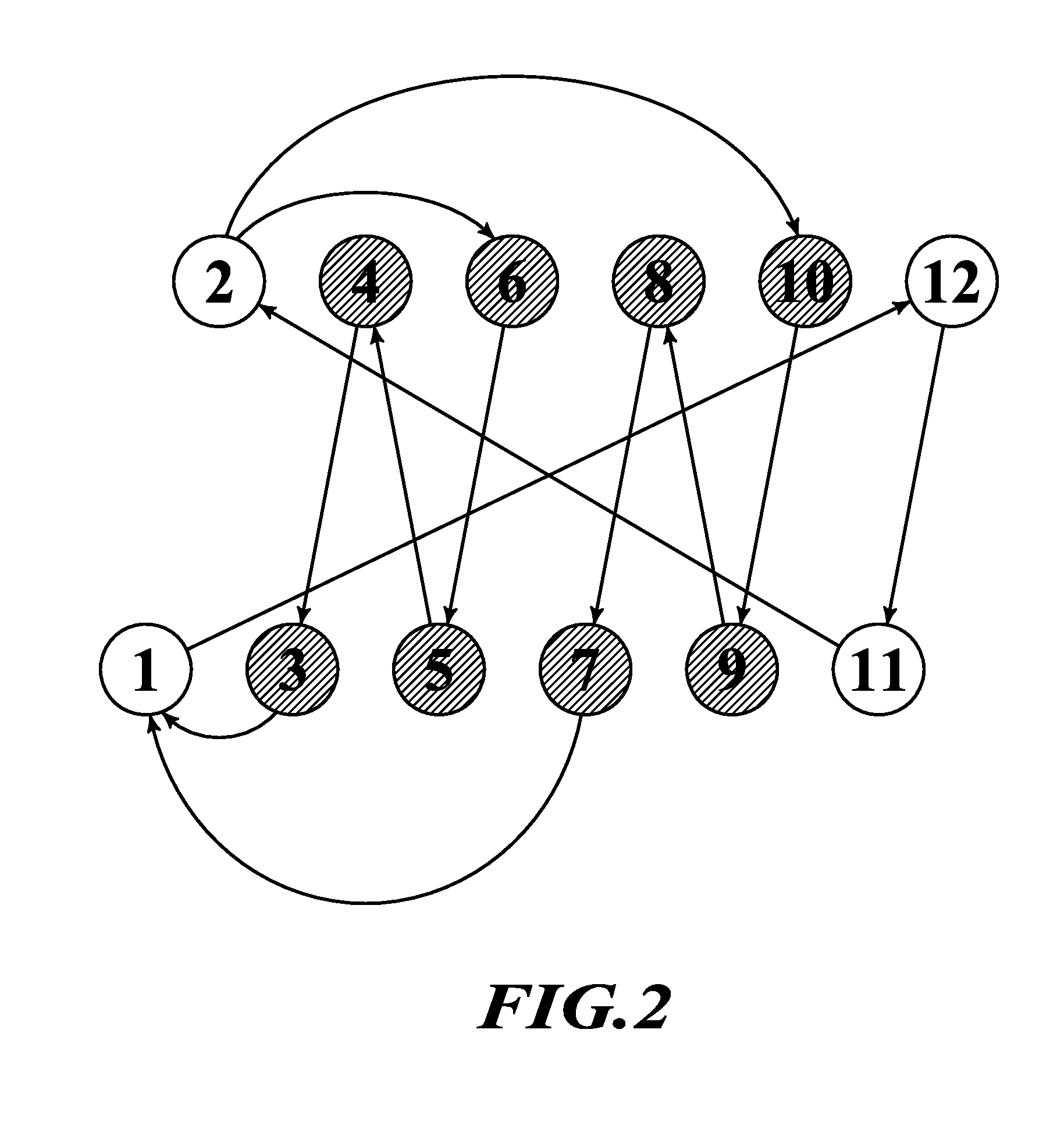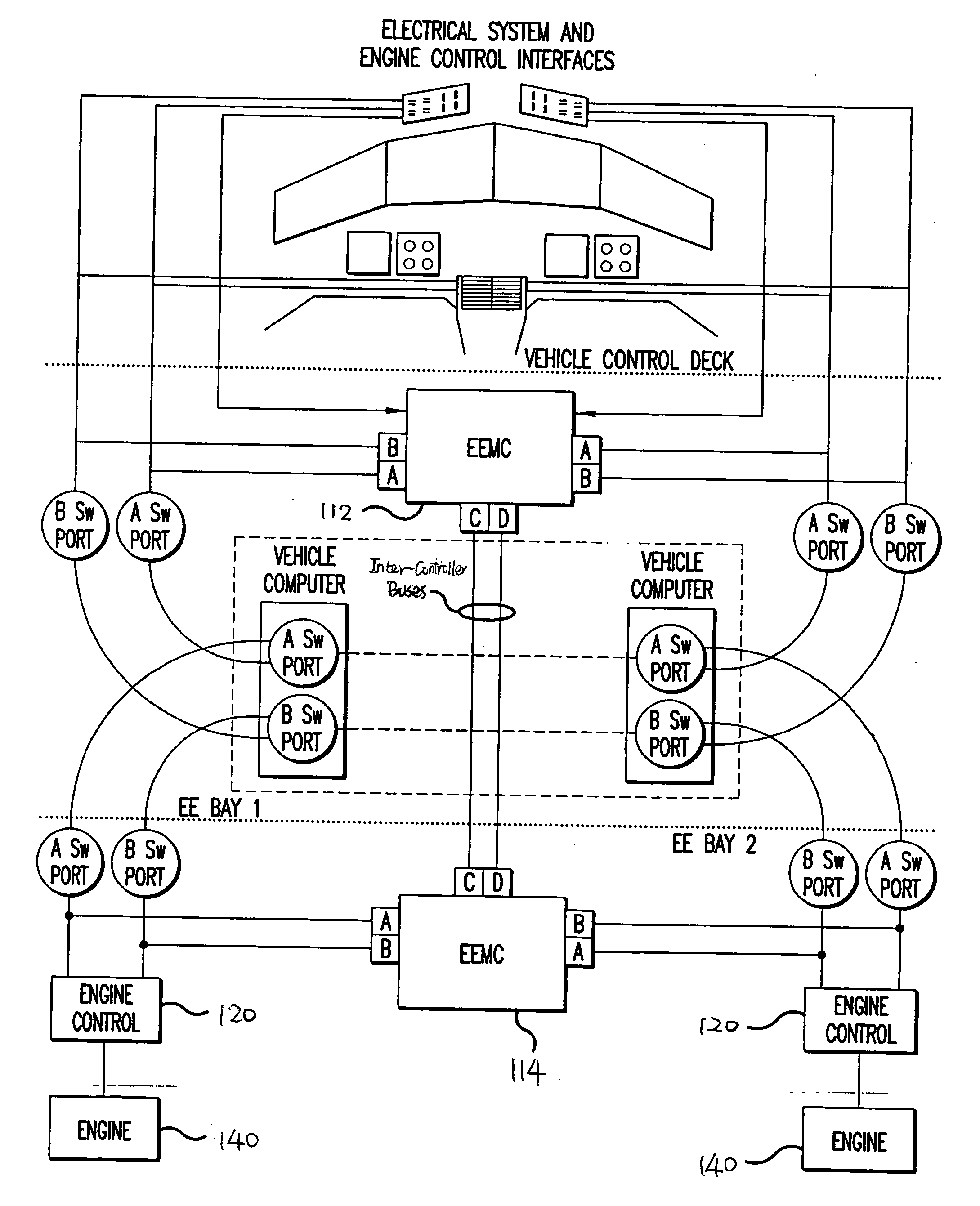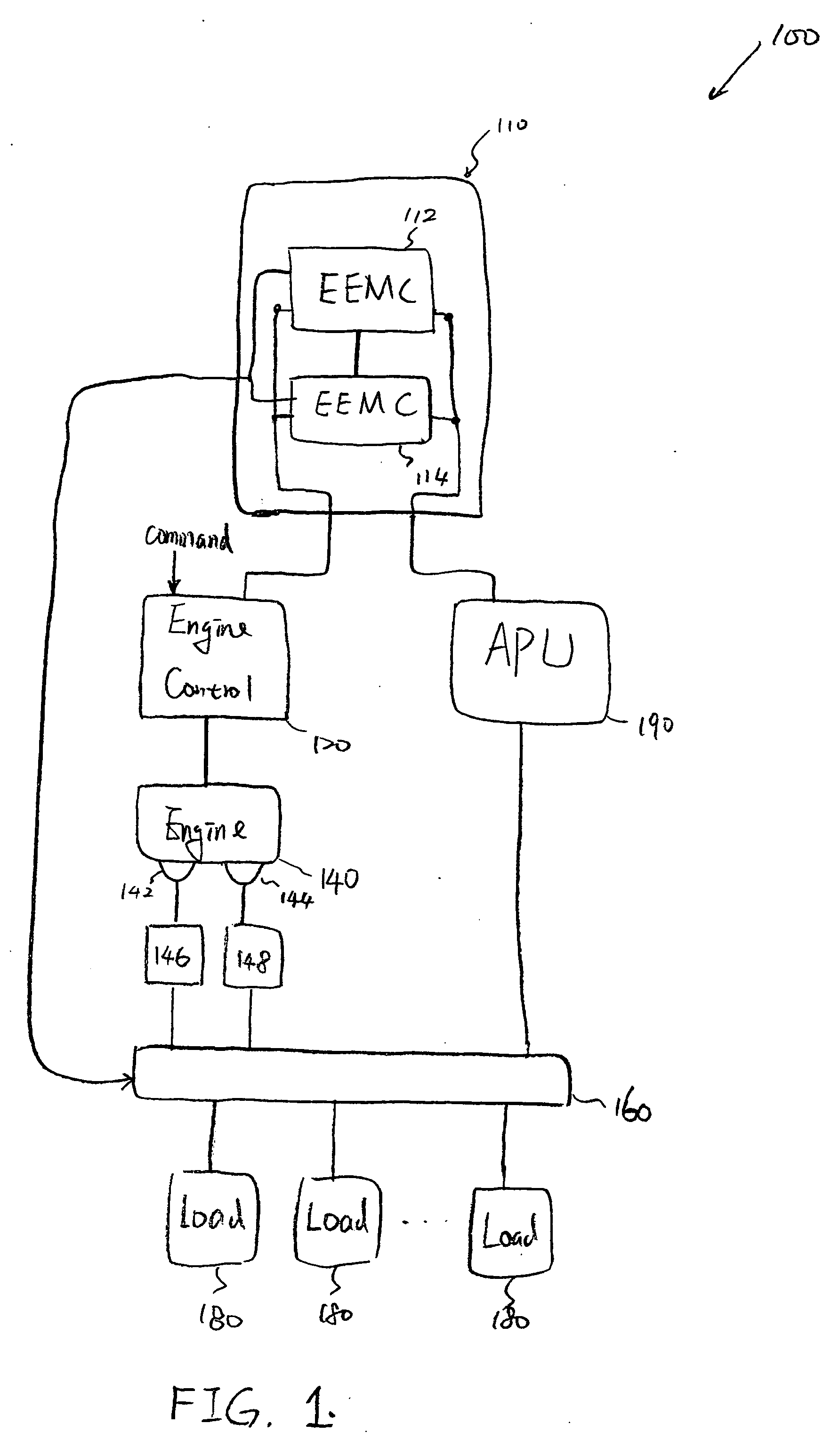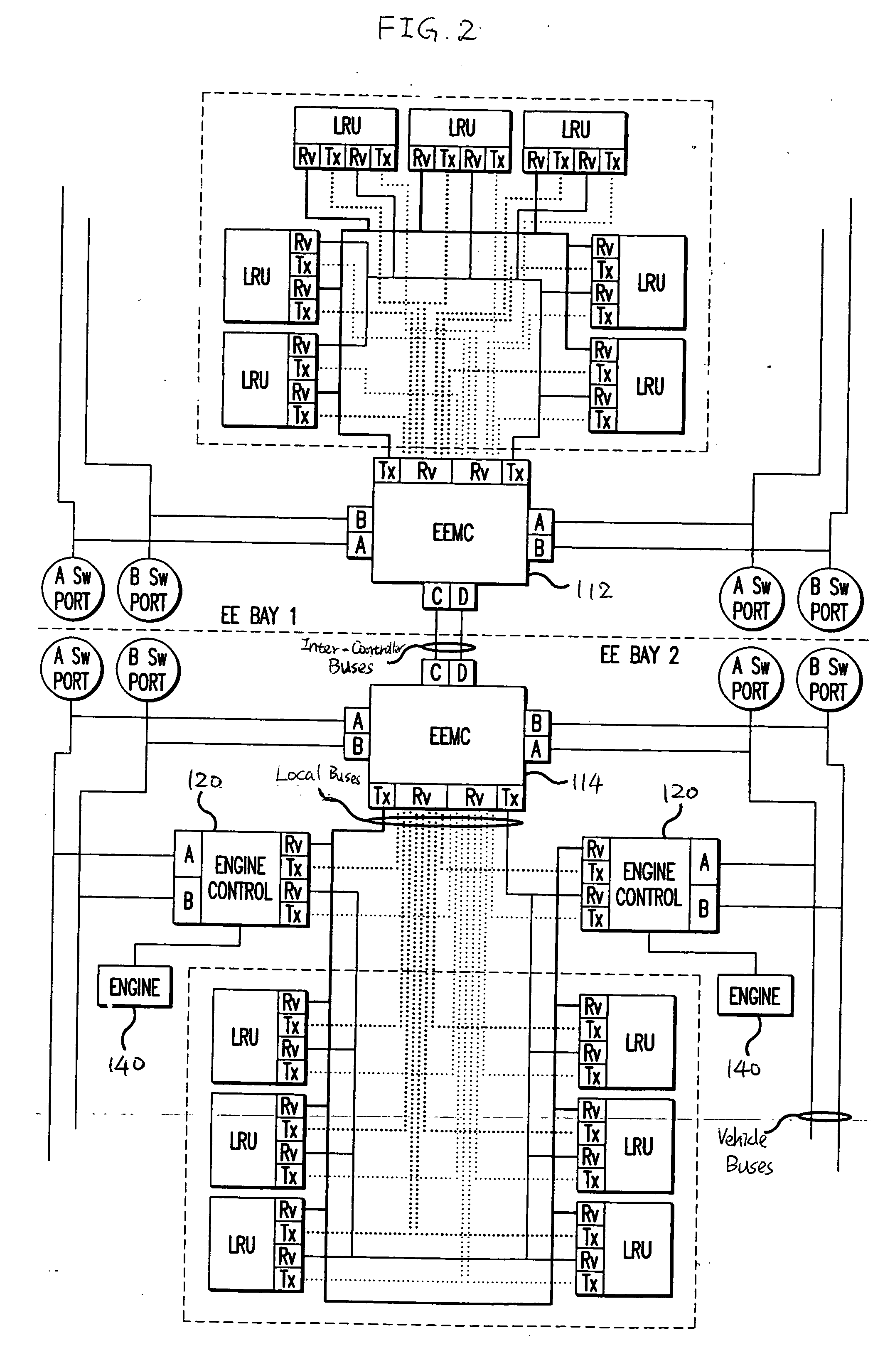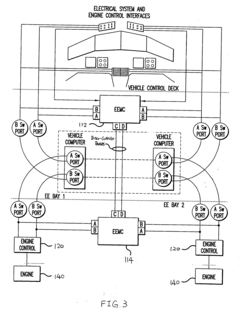V8 Engine Power Output Management: Advanced Strategies
JUL 4, 20259 MIN READ
Generate Your Research Report Instantly with AI Agent
Patsnap Eureka helps you evaluate technical feasibility & market potential.
V8 Engine Evolution
The V8 engine has undergone significant evolution since its inception, with power output management strategies playing a crucial role in its development. The journey began in the early 20th century when the first V8 engines were introduced, primarily for automotive applications. These early designs focused on raw power delivery, with limited emphasis on efficiency or emissions control.
As automotive technology advanced, so did the V8 engine. The 1950s and 1960s saw a surge in V8 popularity, particularly in American muscle cars. During this era, the focus was on increasing displacement and horsepower, often at the expense of fuel efficiency. However, the oil crisis of the 1970s marked a turning point in V8 engine development, prompting manufacturers to explore ways to improve fuel economy without sacrificing performance.
The 1980s and 1990s witnessed the introduction of electronic fuel injection and engine management systems, which revolutionized V8 power output control. These technologies allowed for more precise fuel metering and ignition timing, resulting in improved efficiency and reduced emissions. Concurrently, variable valve timing systems began to emerge, offering the ability to optimize engine performance across a broader range of operating conditions.
The turn of the millennium brought about a new era of V8 engine evolution, characterized by the integration of advanced materials and manufacturing techniques. Lightweight alloys and precision machining processes enabled the creation of more compact and efficient V8 designs. Additionally, forced induction technologies, such as turbocharging and supercharging, became increasingly prevalent, allowing smaller displacement V8s to produce power outputs rivaling their larger naturally aspirated counterparts.
In recent years, the focus has shifted towards hybridization and electrification of V8 powertrains. This approach combines the traditional V8 engine with electric motors, resulting in improved fuel efficiency and reduced emissions while maintaining the characteristic power and sound associated with V8 engines. Furthermore, advanced cylinder deactivation systems have been developed, allowing V8 engines to operate on fewer cylinders under light load conditions, further enhancing fuel economy.
The latest frontier in V8 engine evolution involves the integration of artificial intelligence and machine learning algorithms into engine management systems. These technologies enable real-time optimization of engine parameters based on driving conditions, driver behavior, and environmental factors. Additionally, predictive maintenance capabilities are being incorporated, allowing for proactive servicing and minimizing unexpected downtime.
As environmental regulations become increasingly stringent, V8 engine developers are exploring innovative solutions to meet emissions targets while preserving performance. This includes the development of cleaner-burning fuels, advanced exhaust after-treatment systems, and the potential integration of carbon capture technologies. The future of V8 engines lies in striking a delicate balance between power, efficiency, and environmental responsibility, driven by continuous technological advancements and a deep understanding of power output management strategies.
As automotive technology advanced, so did the V8 engine. The 1950s and 1960s saw a surge in V8 popularity, particularly in American muscle cars. During this era, the focus was on increasing displacement and horsepower, often at the expense of fuel efficiency. However, the oil crisis of the 1970s marked a turning point in V8 engine development, prompting manufacturers to explore ways to improve fuel economy without sacrificing performance.
The 1980s and 1990s witnessed the introduction of electronic fuel injection and engine management systems, which revolutionized V8 power output control. These technologies allowed for more precise fuel metering and ignition timing, resulting in improved efficiency and reduced emissions. Concurrently, variable valve timing systems began to emerge, offering the ability to optimize engine performance across a broader range of operating conditions.
The turn of the millennium brought about a new era of V8 engine evolution, characterized by the integration of advanced materials and manufacturing techniques. Lightweight alloys and precision machining processes enabled the creation of more compact and efficient V8 designs. Additionally, forced induction technologies, such as turbocharging and supercharging, became increasingly prevalent, allowing smaller displacement V8s to produce power outputs rivaling their larger naturally aspirated counterparts.
In recent years, the focus has shifted towards hybridization and electrification of V8 powertrains. This approach combines the traditional V8 engine with electric motors, resulting in improved fuel efficiency and reduced emissions while maintaining the characteristic power and sound associated with V8 engines. Furthermore, advanced cylinder deactivation systems have been developed, allowing V8 engines to operate on fewer cylinders under light load conditions, further enhancing fuel economy.
The latest frontier in V8 engine evolution involves the integration of artificial intelligence and machine learning algorithms into engine management systems. These technologies enable real-time optimization of engine parameters based on driving conditions, driver behavior, and environmental factors. Additionally, predictive maintenance capabilities are being incorporated, allowing for proactive servicing and minimizing unexpected downtime.
As environmental regulations become increasingly stringent, V8 engine developers are exploring innovative solutions to meet emissions targets while preserving performance. This includes the development of cleaner-burning fuels, advanced exhaust after-treatment systems, and the potential integration of carbon capture technologies. The future of V8 engines lies in striking a delicate balance between power, efficiency, and environmental responsibility, driven by continuous technological advancements and a deep understanding of power output management strategies.
Market Demand Analysis
The market demand for advanced V8 engine power output management strategies has been steadily increasing in recent years, driven by several key factors. Automotive manufacturers are facing stringent emissions regulations and fuel efficiency standards, pushing them to optimize engine performance while reducing environmental impact. This has created a significant need for innovative power management solutions that can maximize the output of V8 engines without compromising on efficiency or regulatory compliance.
In the high-performance vehicle segment, there is a growing demand for more powerful and responsive V8 engines. Consumers in this market are willing to pay premium prices for vehicles that offer superior acceleration, top speed, and overall driving experience. This has led to increased investment in research and development of advanced power output management technologies, as manufacturers strive to gain a competitive edge in the luxury and sports car markets.
The commercial vehicle sector, particularly in heavy-duty trucks and construction equipment, has also shown a rising interest in V8 engine power management strategies. Fleet operators are seeking ways to improve fuel economy and reduce operating costs without sacrificing the power and torque required for demanding applications. This has opened up new opportunities for technology providers to develop tailored solutions for the commercial market.
Racing and motorsport industries continue to be significant drivers of innovation in V8 engine power management. The constant pursuit of higher performance and reliability in competitive racing environments has led to the development of cutting-edge technologies that often find their way into consumer vehicles. This technology transfer from track to street has created a symbiotic relationship between racing teams and automotive manufacturers, further stimulating market demand for advanced power output management solutions.
The aftermarket tuning and modification sector has experienced substantial growth, with enthusiasts and performance shops seeking sophisticated tools and technologies to enhance V8 engine output. This has led to an increase in demand for programmable engine control units (ECUs), advanced fuel management systems, and other performance-enhancing components that can be integrated into existing V8 engines.
As the automotive industry shifts towards electrification, there is a paradoxical increase in demand for high-performance V8 engines in certain market segments. This is partly due to a "last hurrah" mentality among enthusiasts and collectors, who are investing in powerful V8-equipped vehicles before potential future restrictions on internal combustion engines. This trend has created a niche market for ultra-high-performance V8 engines with advanced power management systems, catering to discerning customers who value the unique characteristics of these powerplants.
In the high-performance vehicle segment, there is a growing demand for more powerful and responsive V8 engines. Consumers in this market are willing to pay premium prices for vehicles that offer superior acceleration, top speed, and overall driving experience. This has led to increased investment in research and development of advanced power output management technologies, as manufacturers strive to gain a competitive edge in the luxury and sports car markets.
The commercial vehicle sector, particularly in heavy-duty trucks and construction equipment, has also shown a rising interest in V8 engine power management strategies. Fleet operators are seeking ways to improve fuel economy and reduce operating costs without sacrificing the power and torque required for demanding applications. This has opened up new opportunities for technology providers to develop tailored solutions for the commercial market.
Racing and motorsport industries continue to be significant drivers of innovation in V8 engine power management. The constant pursuit of higher performance and reliability in competitive racing environments has led to the development of cutting-edge technologies that often find their way into consumer vehicles. This technology transfer from track to street has created a symbiotic relationship between racing teams and automotive manufacturers, further stimulating market demand for advanced power output management solutions.
The aftermarket tuning and modification sector has experienced substantial growth, with enthusiasts and performance shops seeking sophisticated tools and technologies to enhance V8 engine output. This has led to an increase in demand for programmable engine control units (ECUs), advanced fuel management systems, and other performance-enhancing components that can be integrated into existing V8 engines.
As the automotive industry shifts towards electrification, there is a paradoxical increase in demand for high-performance V8 engines in certain market segments. This is partly due to a "last hurrah" mentality among enthusiasts and collectors, who are investing in powerful V8-equipped vehicles before potential future restrictions on internal combustion engines. This trend has created a niche market for ultra-high-performance V8 engines with advanced power management systems, catering to discerning customers who value the unique characteristics of these powerplants.
Technical Challenges
The development of advanced strategies for V8 engine power output management faces several significant technical challenges. One of the primary obstacles is the inherent trade-off between power output and fuel efficiency. As engineers strive to increase the power output of V8 engines, they must simultaneously address the increasing fuel consumption and emissions, which are under strict regulatory scrutiny.
Another major challenge lies in the thermal management of high-performance V8 engines. The increased power output generates substantial heat, necessitating more sophisticated cooling systems. This challenge is compounded by the trend towards more compact engine designs, which leaves less space for traditional cooling solutions.
The integration of advanced electronic control systems presents another hurdle. While these systems offer precise control over engine parameters, they also introduce complexity and potential points of failure. Ensuring the reliability and durability of these electronic components in the harsh engine environment is a significant engineering challenge.
Material science plays a crucial role in overcoming the limitations of traditional engine components. Developing materials that can withstand higher temperatures and pressures while maintaining longevity is an ongoing challenge. This includes research into advanced alloys, ceramics, and composite materials for pistons, valves, and cylinder linings.
The pursuit of higher power outputs also puts increased stress on the engine's internal components. Balancing the need for lightweight design with the structural integrity required to handle increased forces is a delicate engineering task. This challenge extends to the entire powertrain, including the transmission and driveshaft.
Emissions control remains a persistent challenge, particularly for high-performance V8 engines. Meeting increasingly stringent emissions standards while maintaining power output requires innovative solutions in fuel injection, exhaust gas recirculation, and catalytic converter technology.
The integration of hybrid and electric technologies with V8 engines presents both opportunities and challenges. While these technologies can enhance power output and efficiency, they also introduce complexity in terms of system integration, weight management, and cost considerations.
Lastly, the challenge of noise, vibration, and harshness (NVH) management becomes more pronounced as power outputs increase. Developing strategies to mitigate these issues without compromising performance or adding excessive weight to the vehicle is a complex engineering task.
Another major challenge lies in the thermal management of high-performance V8 engines. The increased power output generates substantial heat, necessitating more sophisticated cooling systems. This challenge is compounded by the trend towards more compact engine designs, which leaves less space for traditional cooling solutions.
The integration of advanced electronic control systems presents another hurdle. While these systems offer precise control over engine parameters, they also introduce complexity and potential points of failure. Ensuring the reliability and durability of these electronic components in the harsh engine environment is a significant engineering challenge.
Material science plays a crucial role in overcoming the limitations of traditional engine components. Developing materials that can withstand higher temperatures and pressures while maintaining longevity is an ongoing challenge. This includes research into advanced alloys, ceramics, and composite materials for pistons, valves, and cylinder linings.
The pursuit of higher power outputs also puts increased stress on the engine's internal components. Balancing the need for lightweight design with the structural integrity required to handle increased forces is a delicate engineering task. This challenge extends to the entire powertrain, including the transmission and driveshaft.
Emissions control remains a persistent challenge, particularly for high-performance V8 engines. Meeting increasingly stringent emissions standards while maintaining power output requires innovative solutions in fuel injection, exhaust gas recirculation, and catalytic converter technology.
The integration of hybrid and electric technologies with V8 engines presents both opportunities and challenges. While these technologies can enhance power output and efficiency, they also introduce complexity in terms of system integration, weight management, and cost considerations.
Lastly, the challenge of noise, vibration, and harshness (NVH) management becomes more pronounced as power outputs increase. Developing strategies to mitigate these issues without compromising performance or adding excessive weight to the vehicle is a complex engineering task.
Current Management Solutions
01 Engine design optimization
Optimizing the design of V8 engines to improve power output involves various techniques such as modifying cylinder configurations, enhancing combustion efficiency, and refining valve timing. These improvements can lead to increased horsepower and torque while maintaining or improving fuel efficiency.- Engine management systems for V8 engines: Advanced engine management systems are employed to optimize the power output of V8 engines. These systems control various parameters such as fuel injection, ignition timing, and valve timing to maximize performance and efficiency. They often incorporate sensors and electronic control units to continuously adjust engine operation based on real-time data.
- Turbocharging and supercharging V8 engines: Forced induction systems, such as turbochargers and superchargers, are used to increase the power output of V8 engines. These systems compress the intake air, allowing more fuel to be burned and resulting in higher power output. Various designs and configurations of turbochargers and superchargers are employed to suit different V8 engine applications.
- Variable valve timing and lift systems: Variable valve timing and lift systems are implemented in V8 engines to enhance power output across different engine speeds. These systems allow for dynamic adjustment of valve opening and closing times, as well as valve lift, optimizing engine breathing and combustion efficiency. This results in improved power output, torque, and fuel economy.
- Cylinder deactivation technology: Cylinder deactivation technology is used in V8 engines to improve fuel efficiency while maintaining the ability to produce high power output when needed. This system allows the engine to operate on fewer cylinders during low-load conditions, reducing fuel consumption. When full power is required, all cylinders are reactivated to deliver maximum output.
- Advanced materials and manufacturing techniques: The use of advanced materials and manufacturing techniques contributes to increased power output in V8 engines. Lightweight materials such as aluminum alloys and composites are used for engine components to reduce overall weight. Precision manufacturing methods, including advanced casting and machining techniques, allow for tighter tolerances and improved engine efficiency, resulting in higher power output.
02 Turbocharging and supercharging systems
Implementing forced induction systems like turbochargers or superchargers can significantly boost the power output of V8 engines. These systems increase the amount of air and fuel mixture entering the combustion chamber, resulting in higher power production.Expand Specific Solutions03 Electronic control and management
Utilizing advanced electronic control systems and engine management software to optimize fuel injection, ignition timing, and other parameters can enhance V8 engine power output. These systems allow for real-time adjustments based on various operating conditions.Expand Specific Solutions04 Materials and manufacturing techniques
Employing lightweight and high-strength materials, as well as advanced manufacturing techniques, can improve V8 engine performance. These innovations can reduce engine weight, increase durability, and allow for higher operating temperatures and pressures, ultimately boosting power output.Expand Specific Solutions05 Exhaust system optimization
Enhancing the exhaust system design, including headers, catalytic converters, and mufflers, can improve V8 engine power output. Optimized exhaust flow reduces back pressure and allows the engine to breathe more efficiently, resulting in increased horsepower and torque.Expand Specific Solutions
Key Industry Players
The V8 Engine Power Output Management market is in a mature stage, with established players and well-developed technologies. The global market size for advanced engine management systems is substantial, driven by increasing demand for fuel-efficient and high-performance vehicles. Key players like GM Global Technology Operations, Ford Global Technologies, and Toyota Motor Corp. are at the forefront of innovation, leveraging their extensive R&D capabilities. These companies, along with others such as Honeywell International Technologies and Cummins, Inc., are continuously developing sophisticated power output management strategies to optimize V8 engine performance. The technology's maturity is evident in the widespread adoption of electronic control units, variable valve timing, and advanced fuel injection systems across the automotive industry.
GM Global Technology Operations LLC
Technical Solution: GM's advanced V8 engine power output management strategy focuses on Dynamic Fuel Management (DFM) technology. This system can deactivate cylinders in 17 different patterns, allowing the engine to operate in 2-, 4-, 6-, or 8-cylinder modes depending on power demand[1]. The DFM system uses sophisticated algorithms to continuously analyze driving conditions and adjust cylinder activation patterns every 12.5 milliseconds[2]. This rapid adaptation ensures optimal fuel efficiency without compromising performance. Additionally, GM has implemented a dual-volute turbocharger design in some V8 engines, which improves low-end torque and reduces turbo lag[3]. The company has also integrated advanced thermal management systems to maintain ideal operating temperatures, further enhancing efficiency and power output[4].
Strengths: Highly adaptive cylinder deactivation, improved fuel efficiency, and maintained performance. Weaknesses: Increased complexity may lead to higher maintenance costs and potential reliability issues in the long term.
Ford Global Technologies LLC
Technical Solution: Ford's V8 engine power output management strategy incorporates several innovative technologies. Their Ti-VCT (Twin Independent Variable Camshaft Timing) system allows for precise control of valve timing, optimizing power output and fuel efficiency across the entire RPM range[1]. Ford has also implemented advanced fuel injection systems, including direct injection and port fuel injection, sometimes combining both in a single engine for improved performance and efficiency[2]. The company's latest V8 engines feature a plasma transferred wire arc (PTWA) coating on cylinder bores, reducing friction and improving heat transfer[3]. Ford has also developed a dynamic skip fire system, similar to GM's DFM, which can deactivate individual cylinders as needed to improve fuel economy without sacrificing power when demanded[4]. Additionally, Ford's PowerBoost technology in hybrid V8 configurations allows for electric assist, further enhancing power output and efficiency[5].
Strengths: Versatile power management across RPM range, advanced materials for friction reduction, and hybrid integration. Weaknesses: Complexity of multiple systems may increase production costs and potential for mechanical issues.
Core Innovations
Even fire 90a°v12 IC engines, fueling and firing sequence controllers, and methods of operation by PS/p technology and IFR compensation by fuel feed control
PatentInactiveUS20090099755A1
Innovation
- Implementing a Progressive Single/Pair (PS/P) fueling and firing sequence in a 90° V12 engine, controlled by a Powertrain Control Module (PCM), which allows for Even Fire operation by selectively reducing fuel feed to specific cylinders during imbalance frequency ranges, effectively converting the engine to a balanced V8 operation during peak vibrations.
Method and system for coordinating engine operation with electrical power extraction in a more electric vehicle
PatentInactiveUS20060174629A1
Innovation
- A method and system that coordinate engine operation with electrical power extraction by using an engine control to wait for a predetermined event before reducing engine power output, with an electrical energy management system selectively switching off loads on the high-speed spool generator and shifting power extraction to a low-speed spool generator, thereby maintaining stable engine operation.
Emissions Regulations
Emissions regulations have become a critical factor in shaping the development and implementation of advanced strategies for V8 engine power output management. As governments worldwide intensify their efforts to combat climate change and improve air quality, automotive manufacturers face increasingly stringent emission standards. These regulations have a profound impact on the design, performance, and efficiency of V8 engines.
In recent years, many countries have adopted more rigorous emission standards, such as Euro 6 in Europe, Tier 3 in the United States, and China 6 in China. These standards set strict limits on various pollutants, including carbon dioxide (CO2), nitrogen oxides (NOx), particulate matter (PM), and hydrocarbons (HC). To comply with these regulations, V8 engine manufacturers must implement sophisticated power output management strategies that balance performance with environmental considerations.
One of the key challenges in meeting emission regulations is the trade-off between power output and fuel efficiency. Traditional V8 engines are known for their high performance and robust power delivery, but they often struggle to meet modern emission standards without significant modifications. This has led to the development of advanced technologies such as variable valve timing, direct fuel injection, and cylinder deactivation, which allow for more precise control over the combustion process and improved fuel economy.
Another important aspect of emission regulations is the focus on real-world driving emissions. Many regulatory bodies now require vehicles to undergo more rigorous testing procedures that better reflect actual driving conditions. This shift has prompted manufacturers to implement more advanced engine control systems that can adapt to various driving scenarios while maintaining optimal emission levels.
The impact of emission regulations extends beyond the engine itself, influencing the entire powertrain system. For instance, the integration of hybrid technologies with V8 engines has become increasingly common as a means to reduce overall emissions while preserving the power characteristics that V8 enthusiasts appreciate. These hybrid systems often incorporate regenerative braking and electric assist features, which contribute to improved fuel efficiency and reduced emissions during urban driving cycles.
As emission regulations continue to evolve, V8 engine manufacturers must stay ahead of the curve by investing in research and development of innovative power output management strategies. This includes exploring alternative fuels, such as hydrogen and synthetic fuels, which could potentially allow V8 engines to operate with significantly reduced emissions. Additionally, advancements in materials science and manufacturing techniques are enabling the creation of lighter, more efficient engine components that can help meet stringent emission targets without compromising performance.
In recent years, many countries have adopted more rigorous emission standards, such as Euro 6 in Europe, Tier 3 in the United States, and China 6 in China. These standards set strict limits on various pollutants, including carbon dioxide (CO2), nitrogen oxides (NOx), particulate matter (PM), and hydrocarbons (HC). To comply with these regulations, V8 engine manufacturers must implement sophisticated power output management strategies that balance performance with environmental considerations.
One of the key challenges in meeting emission regulations is the trade-off between power output and fuel efficiency. Traditional V8 engines are known for their high performance and robust power delivery, but they often struggle to meet modern emission standards without significant modifications. This has led to the development of advanced technologies such as variable valve timing, direct fuel injection, and cylinder deactivation, which allow for more precise control over the combustion process and improved fuel economy.
Another important aspect of emission regulations is the focus on real-world driving emissions. Many regulatory bodies now require vehicles to undergo more rigorous testing procedures that better reflect actual driving conditions. This shift has prompted manufacturers to implement more advanced engine control systems that can adapt to various driving scenarios while maintaining optimal emission levels.
The impact of emission regulations extends beyond the engine itself, influencing the entire powertrain system. For instance, the integration of hybrid technologies with V8 engines has become increasingly common as a means to reduce overall emissions while preserving the power characteristics that V8 enthusiasts appreciate. These hybrid systems often incorporate regenerative braking and electric assist features, which contribute to improved fuel efficiency and reduced emissions during urban driving cycles.
As emission regulations continue to evolve, V8 engine manufacturers must stay ahead of the curve by investing in research and development of innovative power output management strategies. This includes exploring alternative fuels, such as hydrogen and synthetic fuels, which could potentially allow V8 engines to operate with significantly reduced emissions. Additionally, advancements in materials science and manufacturing techniques are enabling the creation of lighter, more efficient engine components that can help meet stringent emission targets without compromising performance.
Fuel Efficiency Strategies
Fuel efficiency strategies play a crucial role in V8 engine power output management, addressing the ongoing challenge of balancing performance with environmental concerns. These strategies encompass a wide range of technological innovations and operational techniques designed to maximize the energy extracted from each unit of fuel consumed.
One of the primary approaches to enhancing fuel efficiency in V8 engines is through advanced combustion management. This involves optimizing the air-fuel mixture ratio, ignition timing, and combustion chamber design to ensure more complete fuel burning. Variable valve timing (VVT) systems have become increasingly sophisticated, allowing for precise control over valve operation across different engine speeds and load conditions. This adaptability significantly improves fuel economy without compromising power output.
Cylinder deactivation technology has emerged as another effective fuel-saving strategy for V8 engines. This system selectively shuts down a portion of the engine's cylinders during light-load conditions, effectively reducing fuel consumption while maintaining smooth operation. When full power is required, all cylinders are reactivated seamlessly, providing the characteristic V8 performance.
Turbocharging and supercharging technologies have also been refined to contribute to fuel efficiency. These forced induction systems allow for downsizing of engines while maintaining or even increasing power output. By enabling smaller displacement engines to produce equivalent power to larger naturally aspirated units, these technologies can significantly reduce fuel consumption, especially during partial load operations.
Direct fuel injection systems have become standard in modern V8 engines, offering precise control over fuel delivery. This technology allows for multiple injection events per combustion cycle, optimizing fuel atomization and distribution within the cylinder. The result is more efficient combustion, reduced emissions, and improved fuel economy across a wide range of operating conditions.
Advanced thermal management systems are being implemented to reduce energy losses and improve overall engine efficiency. These include electric water pumps, split cooling systems, and exhaust heat recovery mechanisms. By maintaining optimal operating temperatures and recapturing waste heat, these systems contribute to improved fuel efficiency and reduced emissions.
Friction reduction techniques have also been a focus of fuel efficiency strategies. This includes the use of low-friction coatings on engine components, advanced lubricants, and redesigned bearing surfaces. By minimizing internal friction, more of the engine's power can be directed to useful work, thereby improving overall efficiency.
In conclusion, fuel efficiency strategies for V8 engines encompass a multifaceted approach, combining advanced combustion management, innovative technologies, and refined engineering techniques. These strategies not only address environmental concerns but also enhance the overall performance and longevity of V8 engines, ensuring their continued relevance in an increasingly efficiency-focused automotive landscape.
One of the primary approaches to enhancing fuel efficiency in V8 engines is through advanced combustion management. This involves optimizing the air-fuel mixture ratio, ignition timing, and combustion chamber design to ensure more complete fuel burning. Variable valve timing (VVT) systems have become increasingly sophisticated, allowing for precise control over valve operation across different engine speeds and load conditions. This adaptability significantly improves fuel economy without compromising power output.
Cylinder deactivation technology has emerged as another effective fuel-saving strategy for V8 engines. This system selectively shuts down a portion of the engine's cylinders during light-load conditions, effectively reducing fuel consumption while maintaining smooth operation. When full power is required, all cylinders are reactivated seamlessly, providing the characteristic V8 performance.
Turbocharging and supercharging technologies have also been refined to contribute to fuel efficiency. These forced induction systems allow for downsizing of engines while maintaining or even increasing power output. By enabling smaller displacement engines to produce equivalent power to larger naturally aspirated units, these technologies can significantly reduce fuel consumption, especially during partial load operations.
Direct fuel injection systems have become standard in modern V8 engines, offering precise control over fuel delivery. This technology allows for multiple injection events per combustion cycle, optimizing fuel atomization and distribution within the cylinder. The result is more efficient combustion, reduced emissions, and improved fuel economy across a wide range of operating conditions.
Advanced thermal management systems are being implemented to reduce energy losses and improve overall engine efficiency. These include electric water pumps, split cooling systems, and exhaust heat recovery mechanisms. By maintaining optimal operating temperatures and recapturing waste heat, these systems contribute to improved fuel efficiency and reduced emissions.
Friction reduction techniques have also been a focus of fuel efficiency strategies. This includes the use of low-friction coatings on engine components, advanced lubricants, and redesigned bearing surfaces. By minimizing internal friction, more of the engine's power can be directed to useful work, thereby improving overall efficiency.
In conclusion, fuel efficiency strategies for V8 engines encompass a multifaceted approach, combining advanced combustion management, innovative technologies, and refined engineering techniques. These strategies not only address environmental concerns but also enhance the overall performance and longevity of V8 engines, ensuring their continued relevance in an increasingly efficiency-focused automotive landscape.
Unlock deeper insights with Patsnap Eureka Quick Research — get a full tech report to explore trends and direct your research. Try now!
Generate Your Research Report Instantly with AI Agent
Supercharge your innovation with Patsnap Eureka AI Agent Platform!
